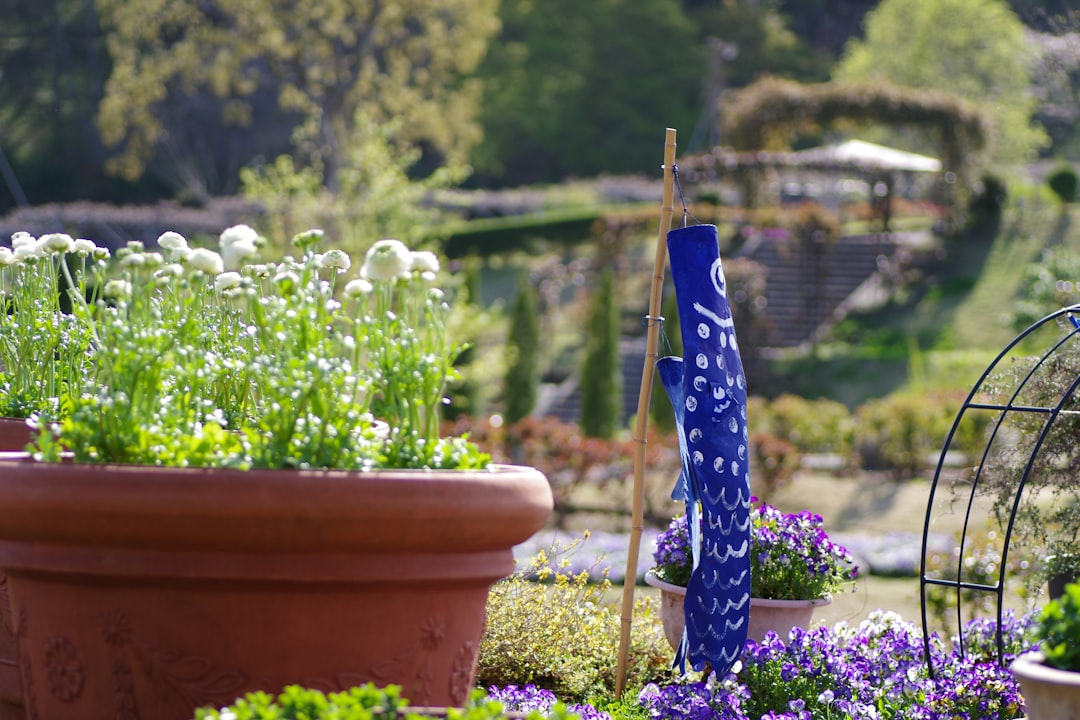The Enchanting World of Small Houseplants in Miniature Gardens

In the realm of gardening, there is a niche that has captured the hearts of many: the world of fairy gardens and other miniature plantings. These tiny landscapes are like portals to a magical realm, and at the heart of their charm are small houseplants that make a surprisingly big impact.
One of the key attractions of using small houseplants in fairy gardens is their versatility. They come in a wide variety of shapes, sizes, and colors, allowing gardeners to create unique and personalized miniature worlds. For instance, succulents are a popular choice. With their thick, fleshy leaves, they can store water for long periods, making them ideal for those who may not have a green thumb or who don't have a lot of time to tend to their plants. Some common succulents used in fairy gardens include Echeveria, which has rosette - shaped leaves in various shades of green, pink, and purple. These rosettes can add a touch of elegance and symmetry to a fairy garden.
Another type of small houseplant that shines in miniature plantings is the fern. Ferns are known for their delicate, lacy fronds that give a soft and whimsical look to any fairy garden. Maidenhair ferns, in particular, are a favorite. Their fine, hair - like leaflets create a sense of airiness and grace. Ferns thrive in moist, shady environments, so they are perfect for creating a cool, forest - like corner in a fairy garden. They can be placed under small faux trees or near tiny water features to enhance the overall aesthetic.
Mosses also play a crucial role in fairy gardens. They are like the carpet of the miniature world, covering the ground and adding a natural, earthy feel. There are different types of mosses, such as sheet moss and cushion moss. Sheet moss can be used to cover large areas, creating a smooth, green surface. Cushion moss, on the other hand, forms small, rounded mounds that can be placed strategically to add texture and dimension. Mosses are relatively low - maintenance and can tolerate a range of light conditions, as long as they are kept moist.
When it comes to choosing the right small houseplants for a fairy garden, it's important to consider the growing conditions. Most fairy gardens are kept indoors or in a sheltered outdoor area. Therefore, plants that can tolerate lower light levels are often preferred. For example, Pilea peperomioides, also known as the Chinese money plant, has round, coin - shaped leaves that are both cute and easy to care for. It can grow well in medium to low light and doesn't require a lot of watering.
Propagation is another aspect to consider. Many small houseplants used in fairy gardens can be easily propagated, which means you can expand your collection without having to spend a lot of money. For instance, many succulents can be propagated from leaf cuttings. Simply take a healthy leaf, let it dry for a few days until a callus forms, and then place it on top of well - draining soil. In a few weeks, roots will start to grow, and a new plant will emerge.
Creating a fairy garden with small houseplants is not just about aesthetics; it can also be a therapeutic activity. The process of carefully selecting and arranging the plants, creating the landscape, and watching them grow can be very relaxing and rewarding. It allows you to escape from the stresses of daily life and enter a world of imagination and creativity.
Moreover, small houseplants in fairy gardens can also have educational value. For children, it can be a great way to learn about plant biology, the importance of caring for living things, and the concept of ecosystems on a small scale. They can observe how different plants interact with each other and with the environment in the miniature garden.
In addition to fairy gardens, small houseplants can be used in other types of miniature plantings, such as terrariums. Terrariums are enclosed glass containers that create a self - sustaining ecosystem. They are perfect for growing small, moisture - loving plants like African violets. African violets have beautiful, velvety flowers in shades of purple, pink, and white. In a terrarium, they can thrive in the humid environment created by the enclosed space.
To sum up, small houseplants are the unsung heroes of fairy gardens and other miniature plantings. Their ability to transform a small space into a magical world is truly remarkable. Whether you are a seasoned gardener or a beginner, exploring the world of small houseplants in miniature gardens can bring a lot of joy and beauty into your life.